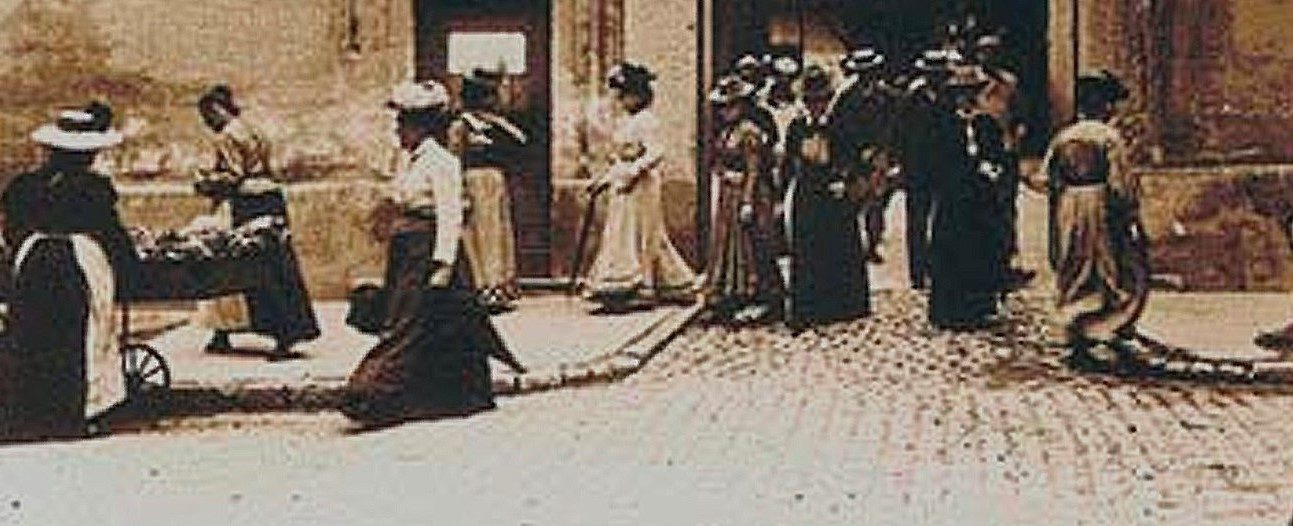France, 1962
Directed by Agnès Varda
With Corinne Marchand (Cléo, aka Florence Victoire), Dominique Davray (Angèle), Antoine Bourseiller (Antoine), Dorothée Blanck (Dorothée)

The film credits appear during a long, elaborate, sequence shot both in black and white and in colors showing a young woman talking to a fortune teller. The soothsayer tries to make sense of the tarot cards while her client starts panicking. It turns out the pretty young woman’s main worry deals with the results of a medical examination made the day before and to be released two hours later. She believes death threatens her but she is told that in fact something else could happen. Even in the shadow of death, life can still surprise.
This prologue gives the film its purpose: chronicling the life of someone as she is waiting for her fate to come. The small events befalling Cléo and her reactions are narrated in thirteen chapters of various lengths, always now shot in black and white. The choice of this number sounds mischievous, a playful hint at superstitious beliefs Cléo and her entourage hold so strongly, and during a first part, the film enjoys fooling the audience with omens: witness the quarrel between Cléo and her maid Angèle about wearing new clothes on Tuesdays or the conversation with the taxi driver who claims she was not afraid of meeting thugs while listening to radio reports on the war in Algeria. Then angst prevails as Cléo wanders in streets, desultorily coming into a café or accompanying a friend of hers, Dorothée, to a movie theater (where Dorothée’s boyfriend works). The last part is built around her encounter with a soldier on leave from Algeria and leads to the long-awaited revelations of what her fate would be (by the way, her chat with the quiet young man delivers another kind of surprise for the audience: “Cléo de 5 à 7” is arguably the first film released in theaters back then giving the colonial war in Algeria, a highly contentious topic, such a big place in the plot).
Cléo comes across as a whimsical and petulant person who is aware of her seductive powers (indeed, the camera likes to emphasize how other people, in particular men, are keen to look at her). Despite her budding success in music and the support of a smart and wealthy lover, she feels insecure and resents comments she thinks too half-hearted and ironic (witness how she quickly and fiercely picks on the pianist she works with). The flaws of this awkward character are not glossed over, but are still recorded in a light-hearted tone. Humor is pervasive and helps the audience to relate readily to Cléo as she wanders the world; at the end it is infused with a deep sense of fantasy, single-handedly carried by Antoine, the soldier, as the journey of the expectant young woman reaches its final and real destination, that is, a new sense of confidence in life and love. In a tongue-in-cheek manner inside a meandering narration director Agnès Varda shows that two hours may suffice to bring about big changes in one’s life – and for the better, perhaps.
Varda astonisheswith the variety of cinematographic styles and the inventiveness of the camerawork used to tell the story of Cléo. Relishing the freedom the Nouvelle Vague was keen to promote, she never hesitates to move from one type of shots to something entirely different in the same sequence. This is the case, for instance, when the pianist and his aide come in Cléo’s apartment to rehearse a set of new songs; as she tests the lyrics of “Sans Toi” (“Without You”, in retrospect a turning point in the expression of her true sentiments) the camera pans around her and it just feels like the recording of a real, staged performance. Once she left her apartment, angry at her aides, a stunning series of POV shots translates her anguish that drives her in the streets and a bar. Some scenes are clearly shot in a documentary-like fashion, like the frog-eater performing on a sidewalk or the sculpture studio where Dorothée works. Part of the comical register of the film, a fake silent slapstick short is even inserted, featuring leading personalities of the Nouvelle Vague (including director Jean-Luc Godard, but without his glasses).
Beyond this visual performance striving to get the most realistic depiction of a state of mind and its environment (the film offers a riveting and poetic vision of the 1960s Paris), the main tour de force is the real time shoot of the story which puts Cléo’s fate squarely before our eyes in its full development and without elisions, a trick that also helps to get the audience fully involved in her life – whatever their opinions on the heroine, they are trapped by the suspenseful course set by the prologue and her worries. However, the running time is just over 90 minutes: something is amiss and in fact it is obvious that the final chapter does not show all it should have. Then, perhaps, part of the time Cléo and Antoine must spend together is better left untold: the newfound happiness they find while chatting and discovering each other is theirs to define and to grow, safely away from the fear for the future that puts Cléo in our way in the first place, during that stunning initial sequence.

